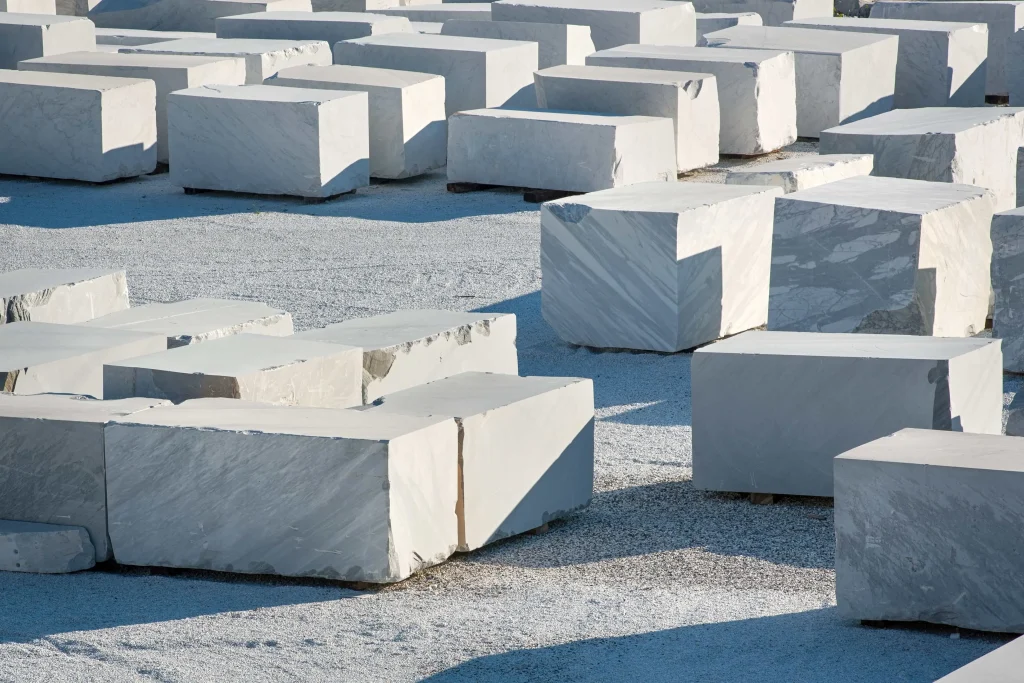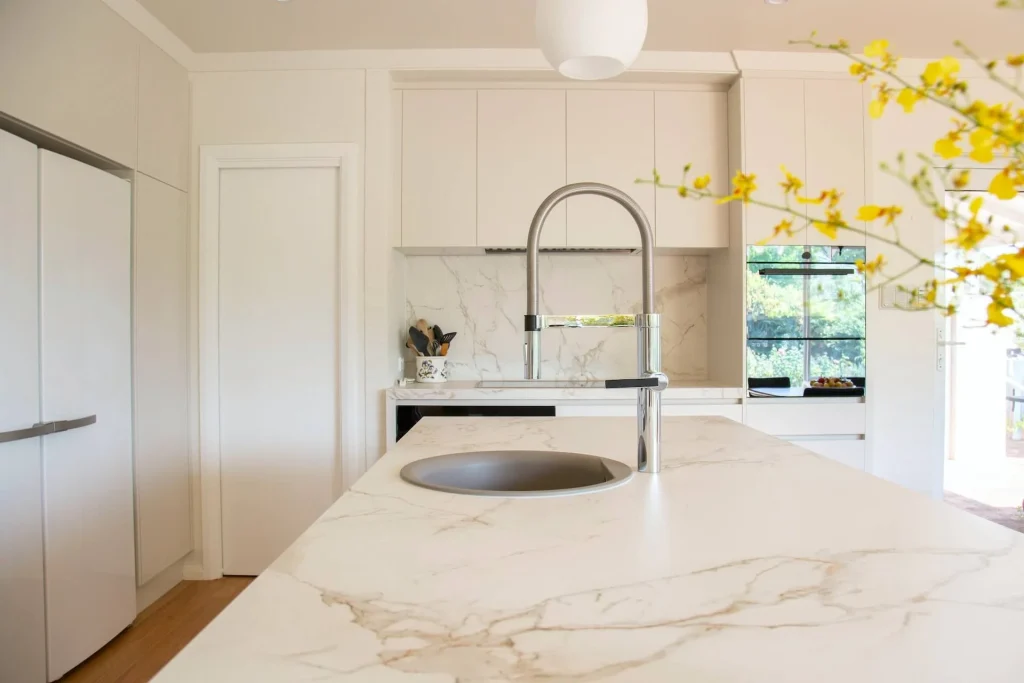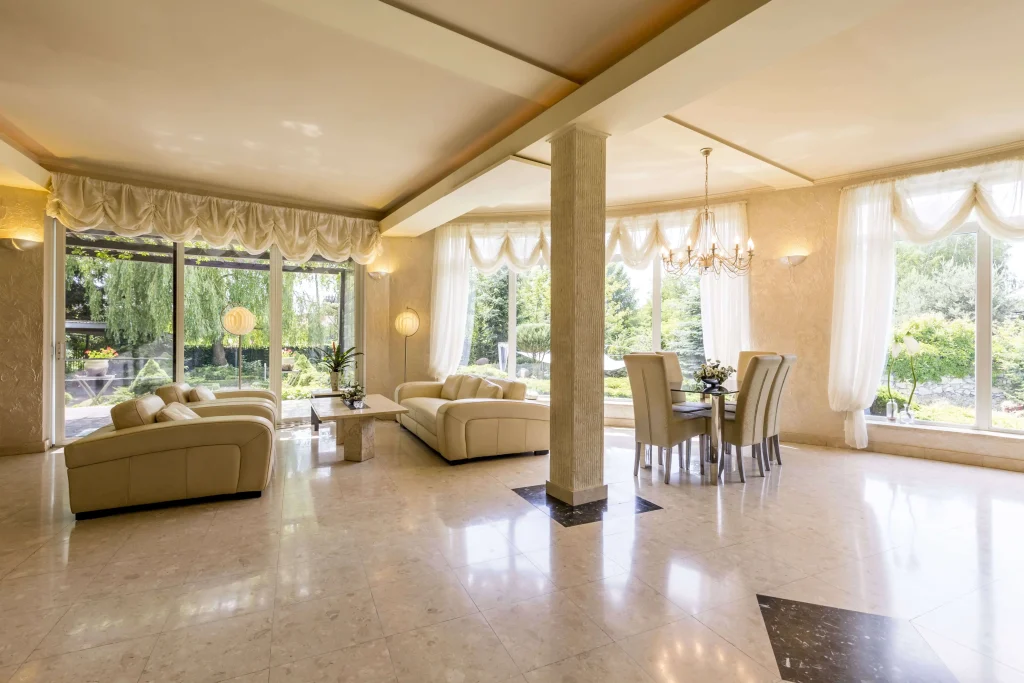Aesthetic-wise, marble makes any space luxurious. It is a material that many homeowners tend to pick when building their homes as it easily elevates any space. But it is also a practical option durability-wise. Planning to build your house and lot for sale with marble finishing? Then here are different types of marble finish you can opt for, where it looks good around the house, as well as some pros and cons of having marble as a decorative stone.
Types of Marble Finish and Where to Use Them

When it comes to tone, pattern, and polish, marble has a plethora of options. Specific types of marble floor finishes are more suited to specific regions of the house. Choosing the proper type of marble floor tiles, backsplash, or walls can improve not only the functionality but also the style of the room. Here are some types of marble finishes and where they might be used.
Polished
Polished marble, which has a high-gloss appearance and a shiny finish, is the most popular and regularly used among the many types of marble flooring as it gives any room an attractive, high-end appearance. Since polished stone is very smooth, it may be quite slippery when wet, making it a risky option for flooring in high-traffic areas or bathrooms. It is, nevertheless, a traditional material for kitchen and bathroom counter surfaces. Polished marble tiles will retain their reflecting finish for many years with proper care.
Honed
Contrary to a polished finish, honed marble tile has a matte appearance with no shine. Because it is matte, scratches are less apparent when light bounces off it as they would on a polished surface. However, the honed stone is more prone to stain, so spills should be wiped up immediately. To add to that, honed marble flooring is less slippery than polished one when wet, making it an excellent choice for marble flooring installation in high-traffic areas such as the living room and hallways.
Sawed
Sawed marble, also known as raw or dressed marble, has a rough, coarse, and dull finish created by using diamond wires or blades. When the material is cut with blades, the cutting marks remain visible on the surface, resulting in a rough marble flooring texture. This polishing improves the floor grip of the natural stone, making it excellent for outdoor use or wet areas like the bathroom.
Tumbled
Tumbling tile involves placing marble tiles in a rubber drum with other materials such as rocks, sand, and water. These added components aid in wearing down the edges and softening the surface, giving an appeal to people who prefer a more natural appearance. These imperfections give the stone character and depth and add a worn-out look, it complements rustic interiors or antique homes well. Tumbled marble tile flooring is ideal for high-traffic areas and damp rooms such as bathrooms where a smooth, slippery surface is not preferable.
Pros and Cons of Marble Tiles

Pros of Using Marble in Your Home
1. Pleasing Aesthetic
Has a pleasing aesthetic impact on the interiors of any space, creating an elegant and upscale appearance anywhere within your house and lot for sale. If you want to make your home more Italian-inspired, adding marble finishings will help you in doing so.
2. Natural material with a one-of-a-kind appearance
Because marble is a natural metamorphic rock, and each piece produced is unique–there would be no other pieces like it anywhere in the world. When using a solid-colored marble stone, the difference in hue and tones is small yet noticeable, while shades and patterns are more pronounced in multi-colored marbles and are evident in every tile.
3. Environmental-friendly
Since marble stone is a natural material, no harm is done to the environment during its creation. It is a lovely accent that strongly impacts any room and can bring the essence of nature’s beauty into a home’s interior.
4. Durable
Marble is widely used everywhere in the world due to its resistance to a wide range of weather conditions. For instance, structures composed of marble that are hundreds of years old are still standing and seem as pristine as the day they were built. As a result, it is perfect for a variety of areas of home construction, particularly indoor features.
5. Cold underfoot
This factor can both be an advantage and disadvantage depending on the situation. For days when there is intense heat, this is a good thing. However, if it is the other way around, this can become uncomfortable.
6. Adds real estate value
At the end of the day, all homeowners are prospective property investors, especially those who make house installations to increase home equity. Natural stone home upgrades will always add value to residential houses and lot for sale. With its ageless elegance and durability evident in various ancient ruins and sculptures, marble has long been regarded as one of the greatest stones for homeowners looking to increase the value of their investments.
Cons of Using Marble in Your Home

1. Porous material
Marble is a porous material, therefore it is prone to water damage. Hence, any spilled material might be harmful to the stone’s surface. To avoid damage, proper resins and sealants must be used.
2. Expensive
Price-wise, marble tiles can be costly as compared to a porcelain tile/porcelain tiles, since they are regarded as an important architectural feature in building design. It is also incredibly heavy, and raising the stone takes a lot of work. Only highly skilled contractors and flooring experts can work with marble flooring and design infills on the floor. Additionally, a significant amount of money must be spent on ongoing maintenance following installation.
3. Stains easily
Marble is composed of limestone, dolomite, and other sedimentary rocks that formed naturally. This means that it has an alkaline minerals pH balance, which causes a chemical reaction when an acidic substance is spilled on it. Acidic substances, such as sauces, food, drinks, and cleaning chemicals, among others, can leave stains on marble flooring surfaces, especially on pure white marble floors, which can be difficult to remove. As a result, efforts must be made to keep acidic chemicals away from a marble surface. It should be polished on a regular basis to maintain its luster and if appropriate measures are not taken, the marble can turn yellowish.
4. Fragile
Marble tiles require special care and upkeep because they are prone to cracking, breakage, and chipping. Floor tiles must be correctly installed to guarantee that there are no gaps between the marble and the floor. Even under normal pressure, weak regions are prone to cracks. Unfortunately, marble is prone to scratch marks that are plainly visible and it is difficult to remove these marks without causing damage to the material’s surface.
Read more: What Flooring Materials Should You Use in Your Home


